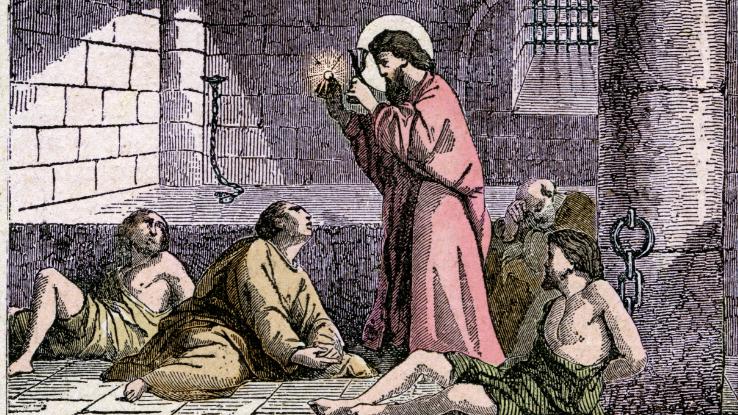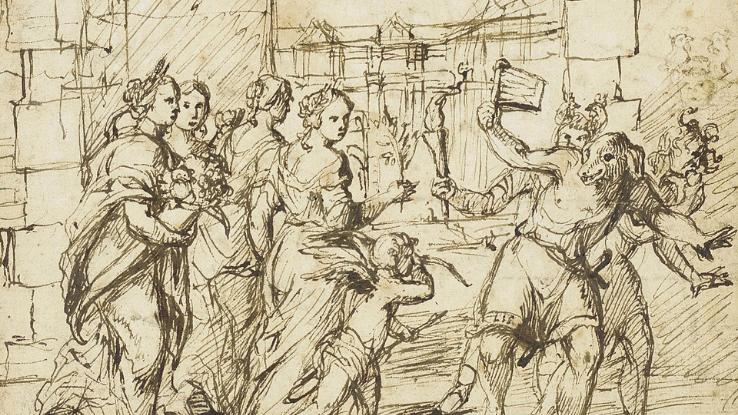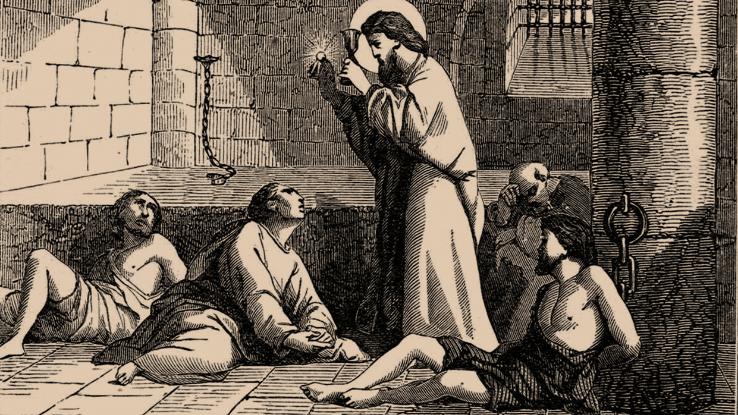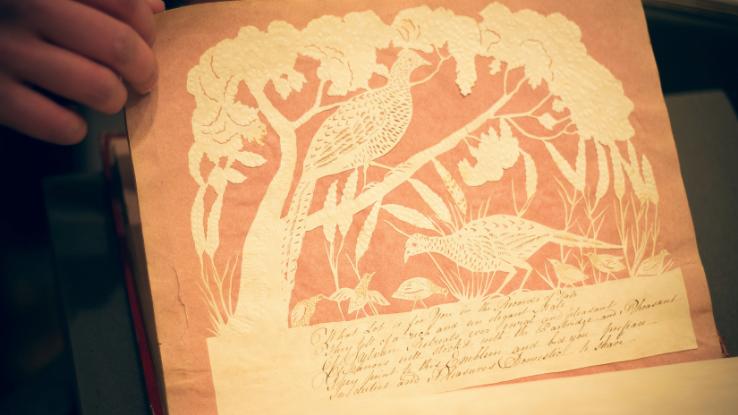If She Doesn't Text Back for Days Do I Text Again

Love it or hate it, February 14 is celebrated by millions of people annually. Often referred to as a "Hallmark Holiday," Valentine's Day is largely associated with sappy greeting cards, heart-shaped boxes of chocolates, rose-filled bouquets, and other so-called symbols of love. Of course, it didn't start out this way. So, what are the origins of Valentine's Day — and why has the holiday endured?
The Pagan Origins of Valentine's Day
Like so many of our modern-day celebrations, Valentine's Day may date back to a pagan festival, at least in part. That celebration was known as Lupercalia, a fertility festival dedicated to Faunus, the Roman god of agriculture, and Rome's founders, Romulus and Remus. Held on the ides of February, Lupercalia was meant to usher in the spring — a time that's most often associated with fertility and birth.

So, did Lupercalia involve chocolates and heart-shaped sweets? Not exactly. To kick things off, an order of Roman priests known as the Luperci would gather in a sacred cave where, according to legend, Rome's founders were cared for by a wolf. They would then sacrifice a goat and a dog, animals that represent fertility and purification respectively. The goat's hide was then dipped in blood, taken to the fields and, finally, given to the Roman women. According to History, "Roman women welcomed the touch of the hides because it was believed to make them more fertile in the coming year." All of this ended in a lottery-like matchmaking system to pair the city's young women and men together. A little more involved than swiping left, huh?
By the end of the 400s A.D., Pope Gelasius put an end to the festival, noting that its pagan roots were in direct opposition to Christianity. In an attempt to Christianize the holiday, Pope Gelasius decided to replace Lupercalia with a Christian feast day. During the Middle Ages, folks would associate this feast day with love and romance, especially in the wake of Geoffrey Chaucer's The Parlement of Foules, a poem about birds finding their mates.
So, how did this feast day become known as Valentine's Day? Well, most Christian feast days are associated with a saint and, as you might be able to guess, Saint Valentine is primarily known as the patron saint of lovers. According to the Catholic Church, there were at least three martyred saints named Valentine or Valentinus, so it's difficult to determine for whom the day was named.

One popular legend suggests that when Emperor Claudius II of Rome outlawed marriage for the young men in his army, a priest named Valentine performed marriages in secret. Eventually, he was found out and Claudis sentenced him to death. Another Valentine, this one a bishop, was also put to death by Claudius the second, though little is known about that potential namesake.
Perhaps the most popular legend associated with Valentine's Day tells the story of a man who wanted to help Christian people escape Roman prisons. In this telling, the imprisoned Valentine sent the first "valentine" greeting to a young woman who had visited him. It is said that before his death, he signed a letter to her "From your Valentine." Of course, which version of Valentine is actually the day's namesake doesn't quite matter as much as what the figure stands for — love, empathy and sacrifice.
How Did Valentine's Day Become the Holiday We Know Today?
Apart from Valentine's letter of legend, the oldest known valentine came about in 1415 when Charles, Duke of Orleans, wrote a love poem to his wife while he was imprisoned in the Tower of London. Shortly after, King Henry V allegedly hired a ghost writer to compose a valentine to his love. But when did the holiday become what we know today?

Observed in the United States, Canada, Mexico, France, Australia and the United Kingdom, modern Valentine's Day as we know it was first celebrated in the 17th or 18th centuries, with folks exchanging handwritten notes and small tokens. By the 1800s, Richard Cadbury, the founder of the Cadbury chocolate company, began the practice of gifting boxes of chocolate on Valentine's Day in the U.K.
Meanwhile, in the U.S., Esther A. Howland, the so-called "Mother of the Valentine," first sold mass-produced valentines in the 1840s. And the rest, as they say, is history. These days, the Greeting Card Association estimates that 145 million people send Valentine's Day cards each year — and that's not including all those cards kids trade at school. Additionally, the National Retail Foundation projected that Americans would spend a staggering $27.4 billion in 2020 on Valentine's-related items.
MORE FROM REFERENCE.COM
If She Doesn't Text Back for Days Do I Text Again
Source: https://www.reference.com/world-view/valentine-really-mean-c9a772b7fe15c1a1?utm_content=params%3Ao%3D740005%26ad%3DdirN%26qo%3DserpIndex
0 Response to "If She Doesn't Text Back for Days Do I Text Again"
Post a Comment